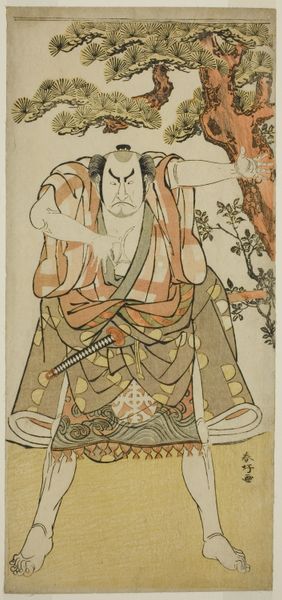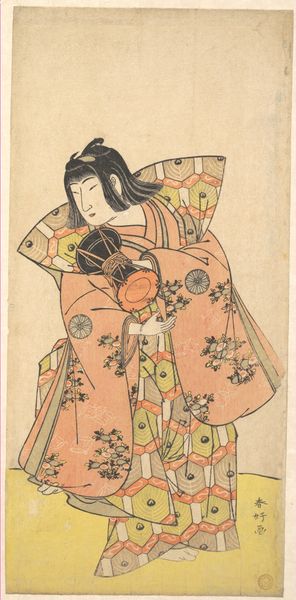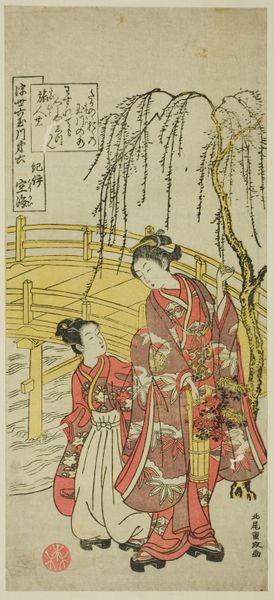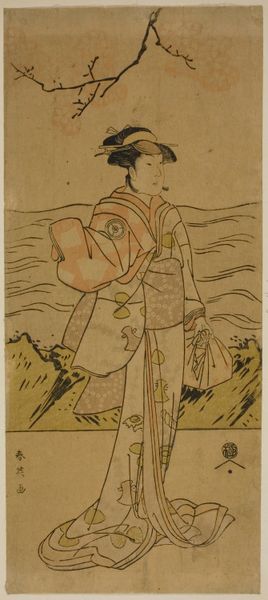
print, woodblock-print
#
portrait
#
water colours
#
ink painting
# print
#
asian-art
#
ukiyo-e
#
woodblock-print
#
watercolor
Dimensions: 68.0 × 11.5 cm
Copyright: Public Domain
Curator: Immediately, I sense a feeling of delicate tranquility—those muted tones and the serene posture of the figures evoke a gentle breath of spring, almost as though the wind might whisper a love song as it passes by. Editor: Well, let’s situate this beautiful artwork for our listeners. What we have here is a woodblock print, circa 1780, created by Torii Kiyonaga. It’s called "Two Women Viewing Cherry Blossoms," and currently resides at The Art Institute of Chicago. Knowing this context—that we are viewing a work from the Ukiyo-e tradition—helps us to unlock its many social and aesthetic dimensions. Curator: Ukiyo-e, eh? Sounds almost like “fleeting world.” It’s about capturing these ephemeral moments, isn't it? Just like that perfect instant when the cherry blossoms explode in full bloom. Editor: Precisely! These prints weren't just aesthetic objects; they reflect Edo-period society, its transient pleasures, and often the social status of its subjects, too. Look at their garments—those elaborate patterns are indicative of wealth and belonging to a specific echelon of society. And note the composition itself: elongated figures, graceful lines—everything suggests refinement. It might seem just pretty at first sight, but is so intricately constructed to project very definite concepts about femininity and social standing. Curator: Hmmm... you can’t help but notice how both of their faces are blank; in other words, this makes the artwork slightly devoid of emotion. I feel a strange dissonance. Maybe it’s on purpose—we’re seeing their station, but are excluded from any personal experience, if that makes sense. Editor: It does. It could certainly be read as commentary on how these women are viewed, reduced to societal roles rather than being seen as individuals. Cherry blossom viewing, while beautiful, could be just another societal expectation, so by focusing so strongly on garments and fashion trends, and on removing individualized emotions or other elements of the surrounding setting, it makes one focus even more on this sense of an imposed social construct. This invites interesting considerations around class, gender, and how societal expectations of feminine roles in 18th-century Japan may differ from our modern lens today. Curator: That’s definitely something to ponder next time I enjoy my *hanami*. All those social structures hidden just below the pretty surface. Editor: Indeed. There’s so much hidden just under the surface, especially when art allows us to enter a dialogue across time.
Comments
No comments
Be the first to comment and join the conversation on the ultimate creative platform.













